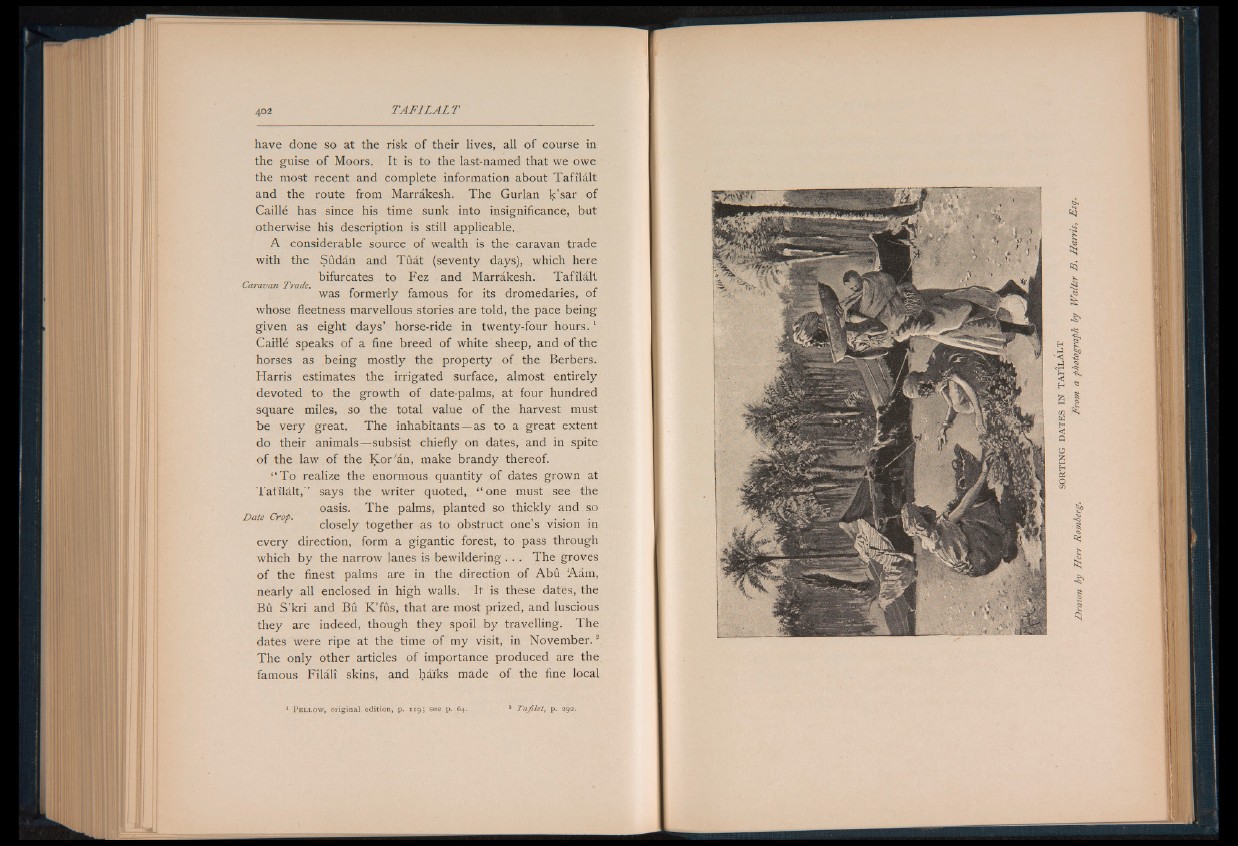
have done so at the risk of their lives, all of course in
the guise of Moors. It is to the last-named that we owe
the most recent and complete information about Tafilalt
and the route from Marrakesh. The Gurlan k ’sar of
Caillé has since his time sunk into insignificance, but
otherwise his description is still applicable.
A considerable source of wealth is the caravan trade
with the Sûdân and Tûât (seventy days), which here
bifurcates to Fez and Marrakesh. Tafilalt
Caravan Trade. . , . r
was formerly famous for its dromedaries, of
whose fleetness marvellous stories are told, the pace being
given as eight days’ horse-ride in twenty-four hours.1
Caillé speaks of a fine breed of white sheep, and of the
horses as being mostly the property of the Berbers.
Harris estimates the irrigated surface, almost entirely
devoted to the growth of date-palms, at four hundred
square miles, so the total value of the harvest must
be very great. The inhabitants —as to a great extent
do their animals—subsist chiefly on dates, and in spite
of the law of the Kor'ân, make brandy thereof.
“ To realize the enormous quantity of dates grown at
Tafilalt,’’ says the writer quoted, “ one must see the
oasis. The palms, planted so thickly and so
Date Crop. , , , , . . .
closely together as to obstruct one s vision in
every direction, form a gigantic forest, to pass through
which by the narrow lanes is bewildering . . . The groves
of the finest palms are in the direction of Abû Aâm,
nearly all enclosed in high walls. It is these dates, the
Bu S ’kri and Bû K ’fûs, that are most prized, and luscious
they are indeed, though they spoil by travelling. The
dates were ripe at the time of my visit, in November.2
The only other articles of importance produced are the
famous Fîlàlî skins, and haiks made of the fine local
1 P e l l o w , o r ig in a l ed it io n , p . 1 1 9 ; s e e p . 64. 2 T a file t, p . 292.